CLICK FOR ARCHIVE PHOTOS

History and legends indicate that in the year 1498, the great navigator Vasco da Gama anchored his four ships
off the Inhambane Bay while on his way to India.
Vasco da Gama's men went to the nearby settlement during a period of bad weather and came across people who spoke "Bitonga".
It is told that while trying to communicate with them the Portuguese gave the place the name of 'Inhambane' by
mistake and it has been called so ever since.
Inhambane is the 3rd biggest port in Mozambique and has a population of about 50 000 people. The town straddles the Tropic of Capricorn and receives more rain than the southern province of Maputo. It also lies just outside the cyclone belt which causes so much destruction. Inhambane's climate is very humid average 75 degrees and most rain falls in January. Midsummer can be unbearably hot although the coast is cooled by sea breezes.
Inhambane is one of the oldest European settlements on the east coast dating back to 1534 when Portuguese explorers established a trading post here. Inhambane is a comfortable days drive along the EN1 from Maputo. The road is tarred and is being upgraded and was to a large extent spared damage during the civil war.
There is a very good good airport at Inhambane and although no commercial flights service Inhambane, the airport is quite capable of handling large jets of various charter companies.
There is also a certain amount of Dhow (Slow Boat to China style) traffic, between Beira, Vilanculos and Inhambane.
Maxixe provides the most southerly anchorage for dhows, known as "Barcos as velas" or "Ingalaoa". There is a short dhow ride across the Bay to Maxixe and this is an experience that has to be savoured by visitors.
You will be carried to the craft in the age old tradition once there are enough passengers to warrant the ride. It is cheap and saves you a round trip of 60 kms by road.
Where the name "Dhow" came from and it's origin, is not too clear, however Inhambane and dhows go hand in hand.
The seamanship and boatbuilding skills of the "Marinheiros" (sailors) and the "Pescadores" (fishermen), have resulted in Inhambane having the biggest fleet of working dhows on the East African Coast. The fact that roads were all but impassable during the civil war, made dhow traffic an important part of Inhambane's economy.
These craft were used originally by the Arabs and had a lateen sail. This is a triangular sail on a short wooden mast using a long yard arm (Cross spar) rigged at a 45 degree angle. This is not a very efficient sail rigging and these craft were very dependant on prevailing trade and anti trade winds, to get to and from north and south destinations. They could not tack very well at all, so therefore could not sail very close into the wind.
There were very big ocean going dhows in the "Old Days" of up to 200 tons, last seen in the late 1800's. These were the slave galleys, the back bone of the "Arab Slave Trade" fleets.
In November of every year, there is the annual dhow race, sponsered by the governor of Inhambane on Inhambane Bay.The prize money is very important to the entrants as it can be equivalent to their annual earnings. This race is a spectacle which draws huge crowds and is a popular yearly event.
Inhambane was a very busy harbour capable of handling coasters of up to 10 000 tons, until the the handover to Frelimo in the 1960's.
Tons of cashew nuts, copra, cotton, oil seed, peanuts and sugar was loaded at Inhambane harbour. More than a million migrant workers bound for work on the gold mines of the Witwatersrand, set off regularly from Inhambane by boat for Lourenco Marques and then by rail to Johannesburg.
Today, road traffic, services most of the area's needs.
ARCHIVE PHOTOGRAPHS
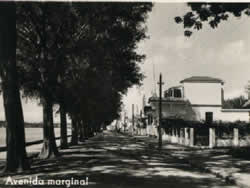
|
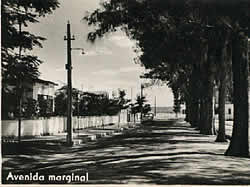
|
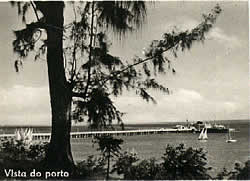
|
Avenida Marginal Inhambane |
Avenida Marginal Inhambane |
View of Inhambane Harbour |
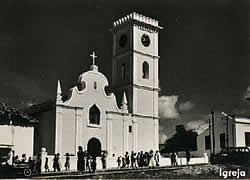
|
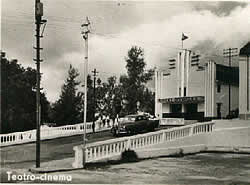
|
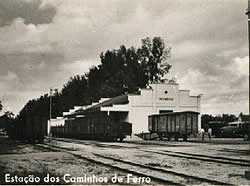
|
Inhambane Cathederal |
Cinema Theatre Inhambane |
CFM Railway Station Inhambane |
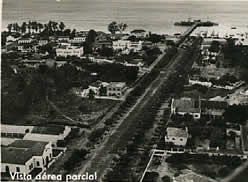
|
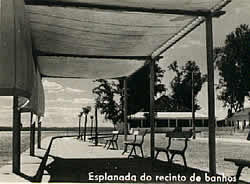
|
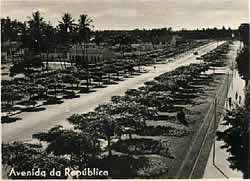
|
Aerial view of Inhambane |
Esplanade Inhambane Mozambique |
Avenida Republica Inhambane |
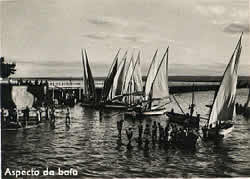
|

|
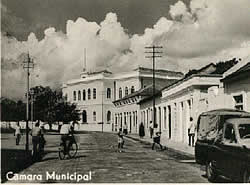
|
Dhows in Inhambane Harbour |
Vasco da Gama Gardens Inhambane |
Municipal Buildings Inhambane |
|

